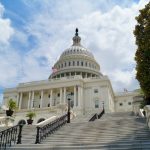Southern California is facing one of the most severe storm systems in nearly two decades, with Los Angeles under a rare severe thunderstorm watch for the first time in 17 years. Mandatory evacuations have been ordered in vulnerable communities like Pacific Palisades, areas already scarred by wildfires earlier this year, now at high risk for mudslides and flooding. While this event is often portrayed as a natural disaster, the reality is far more troubling: years of poor governance and misguided policies have worsened the region’s vulnerability to such storms.
For too long, California’s left-leaning leadership has prioritized radical environmental ideology over practical measures that protect lives and property. Bans on controlled burns and excessive restrictions on forest management have left vast stretches of land dangerously overgrown, turning wildfire aftermath zones into ticking time bombs for mudslides and erosion. These policies ignore decades of proven forest and fire management techniques, placing communities directly in harm’s way. The current floods and evacuations are not unforeseeable tragedies but consequences of political decisions that put ideology above safety.
🚨🚨#BREAKING 🚨🚨
The most significant October storm we have seen in more than a decade is currently en route to Southern California. It will drop up to 3 feet of snow in the Sierras, 4" of rain in the transverse ranges, and Severe thunderstorms along the coast.This storm… pic.twitter.com/w7aUye6k4F
— California Wildfire Tracking (@CaliFireTracker) October 13, 2025
Moreover, Southern California’s flood control infrastructure has been neglected or actively dismantled in favor of trendy “green” projects that often fail in the face of real storms. Instead of maintaining and reinforcing levees and barriers that protect critical urban areas, officials have invested in costly but inadequate solutions that do little to mitigate flood risks. The widespread flood watches across Los Angeles and Orange County reveal the consequences of policies that sacrifice practical public safety measures for environmental virtue signaling.
The emergency response also highlights systemic deficiencies. Residents had to be warned door-to-door by police because emergency management was largely reactive instead of proactive, demonstrating a failure to anticipate disaster risks and prepare accordingly. This reactive approach puts lives in jeopardy and exposes a bureaucracy overwhelmed by hardly unpredictable storms. Such failures raise serious questions about accountability and the priorities of those in power.
Southern California’s storm crisis is a stark reminder that ideological governance can have deadly results when it comes to natural disaster preparedness. Instead of doubling down on costly green experiments and regulatory roadblocks, California needs a return to common-sense policies: robust forest and fire management, investment in proven infrastructure, and emergency systems that put people’s safety first. Until this happens, residents remain exposed to the fallout of political mismanagement every time nature tests them. It’s time for real leadership to step up and protect the American people, not just political agendas.




